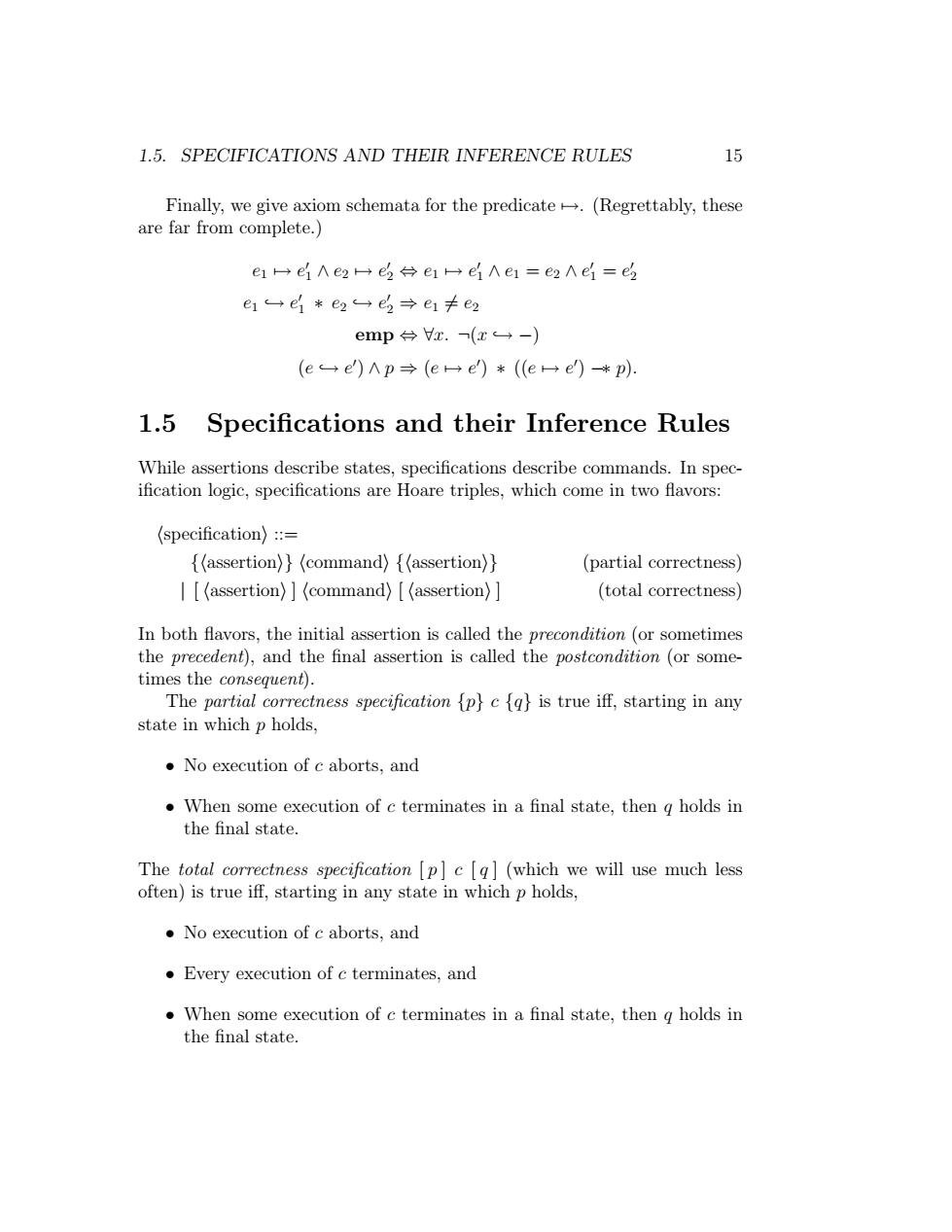正在加载图片...

1.5.SPECIFICATIONS AND THEIR INFERENCE RULES 6 Finally,we give axiom schemata for the predicate.(Regrettably,these are far from complete.) e1一eAe2-÷e1-eAe1=e2Ae=e4 e1一e*e2一→e1卡e2 emp÷红.(x-) (ee)np→(ee)*(ee)*p) 1.5 Specifications and their Inference Rules While assertions describe states,specifications describe commands.In spec- ification logic,specifications are Hoare triples,which come in two flavors: (specification)::= {(assertion)}(command){(assertion)} (partial correctness) I[(assertion)](command)[(assertion)] (total correctness) In both flavors,the initial assertion is called the precondition (or sometimes the precedent),and the final assertion is called the postcondition (or some- times the consequent). The partial correctness specification (p)cq}is true iff,starting in any state in which p holds No execution of c aborts,and When some execution of c terminates in a final state,then q holds in the final state. The total correctness specification [p]c[](which we will use much less often)is true iff,starting in any state in which p holds, No execution of c aborts,and Every execution of c terminates,and When some execution of c terminates in a final state,then g holds in the final state.1.5. SPECIFICATIONS AND THEIR INFERENCE RULES 15 Finally, we give axiom schemata for the predicate 7→. (Regrettably, these are far from complete.) e1 7→ e 0 1 ∧ e2 7→ e 0 2 ⇔ e1 7→ e 0 1 ∧ e1 = e2 ∧ e 0 1 = e 0 2 e1 ,→ e 0 1 ∗ e2 ,→ e 0 2 ⇒ e1 6= e2 emp ⇔ ∀x. ¬(x ,→ −) (e ,→ e 0 ) ∧ p ⇒ (e 7→ e 0 ) ∗ ((e 7→ e 0 ) −∗ p). 1.5 Specifications and their Inference Rules While assertions describe states, specifications describe commands. In specification logic, specifications are Hoare triples, which come in two flavors: hspecificationi ::= {hassertioni} hcommandi {hassertioni} (partial correctness) | [ hassertioni ] hcommandi [ hassertioni ] (total correctness) In both flavors, the initial assertion is called the precondition (or sometimes the precedent), and the final assertion is called the postcondition (or sometimes the consequent). The partial correctness specification {p} c {q} is true iff, starting in any state in which p holds, • No execution of c aborts, and • When some execution of c terminates in a final state, then q holds in the final state. The total correctness specification [ p ] c [ q ] (which we will use much less often) is true iff, starting in any state in which p holds, • No execution of c aborts, and • Every execution of c terminates, and • When some execution of c terminates in a final state, then q holds in the final state